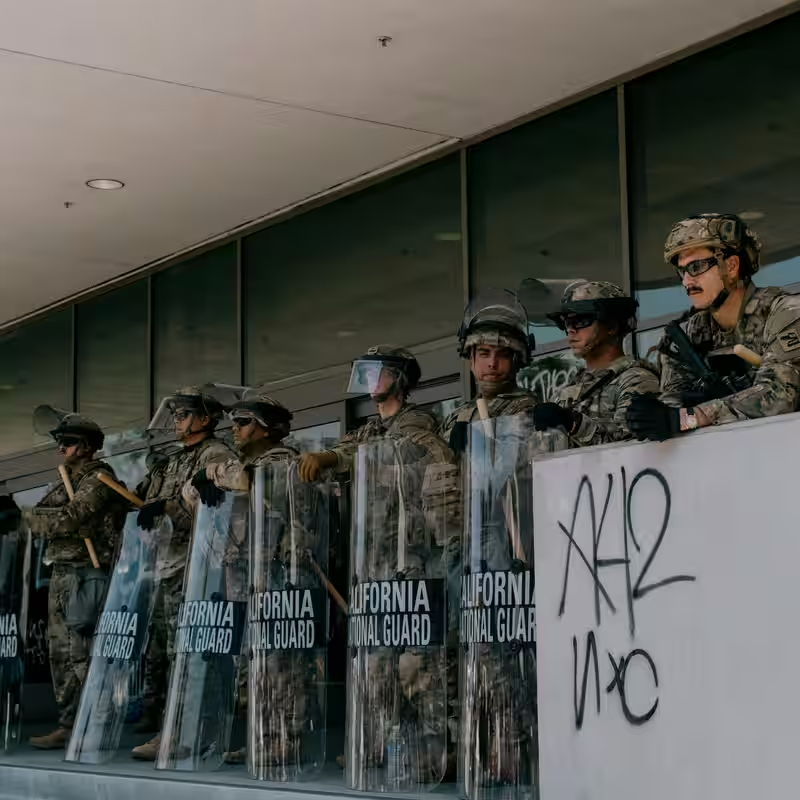Judge Blocks Trump’s National Guard Deployment—But He’s Already Sending Texas Troops to Chicago
In a high-stakes legal and political showdown, a federal judge in Oregon has once again blocked former President Donald Trump’s attempt to deploy National Guard units to states without gubernatorial consent—only for Trump to pivot immediately by mobilizing Texas-based forces aimed at Chicago and other Democratic-led cities.
National Guard Deployment Blocked—Again
On Sunday, October 5, 2025, U.S. District Judge Anne Aiken issued a scathing order accusing the Trump administration of “blatantly circumventing” her earlier injunction that barred the unilateral deployment of National Guard troops to Oregon and California.
The original lawsuit, filed by Oregon Governor Tina Kotek and California Governor Gavin Newsom, argued that Trump’s executive directive violated the Posse Comitatus Act and the Insurrection Act’s strict limits on federal military use within U.S. borders without state approval.
“The administration cannot simply repackage the same unlawful action under a new label,” Judge Aiken wrote. “This is not governance—it’s end-run politics.”
Trump’s Workaround: Texas Troops Headed to Chicago
Within hours of the ruling, however, Trump announced a new strategy: activating National Guard units from Texas—a state whose Republican governor, Greg Abbott, has enthusiastically backed the move—and directing them toward “high-crime urban zones,” specifically naming Chicago, Detroit, and Philadelphia.
“If blue-state governors won’t protect their own citizens, we’ll send in forces that will,” Trump declared at a rally in Amarillo. “These cities are war zones—and I’m done asking permission.”
Legal experts say this maneuver exploits a gray area in federal law: while the president cannot order a state’s National Guard without the governor’s consent, he can request troops from a willing state and deploy them under federal Title 32 status for “domestic support operations.”
Chicago Mayor Pushes Back
Chicago Mayor Brandon Johnson called the plan “a dangerous federal overreach” and vowed to challenge it in court. “We don’t need outside militias patrolling our neighborhoods,” he said. “We need investment, not occupation.”
Illinois Governor J.B. Pritzker echoed the sentiment, stating, “This isn’t about public safety—it’s about political theater ahead of 2028.”
Timeline of the Legal Battle
| Date | Event |
|---|---|
| Sept. 12, 2025 | Trump signs executive order deploying National Guard to CA, OR |
| Sept. 18, 2025 | Judge Aiken issues temporary restraining order |
| Oct. 1, 2025 | Administration claims “revised deployment plan” complies with law |
| Oct. 5, 2025 | Judge blocks revised plan, calls it “a sham” |
| Oct. 5, 2025 (evening) | Trump announces Texas Guard deployment to Chicago |
What Does the Law Actually Say?
Under the U.S. Constitution and the Insurrection Act, the president may deploy military forces domestically only under specific conditions: to suppress insurrections, enforce federal law when state authorities fail, or protect civil rights. The Posse Comitatus Act generally prohibits using the military for law enforcement.
However, the National Guard operates under a dual state-federal structure. When activated by a governor, it’s a state militia. When federalized by the president (with or without consent, under certain conditions), it becomes part of the U.S. armed forces.
Legal scholars are divided on whether Trump’s Texas-based deployment crosses a constitutional line—but most agree it sets a dangerous precedent.
“This isn’t just about Trump,” said constitutional law professor Leah Wright Rigueur of Johns Hopkins. “It’s about whether future presidents can weaponize inter-state military cooperation to override local autonomy.”




